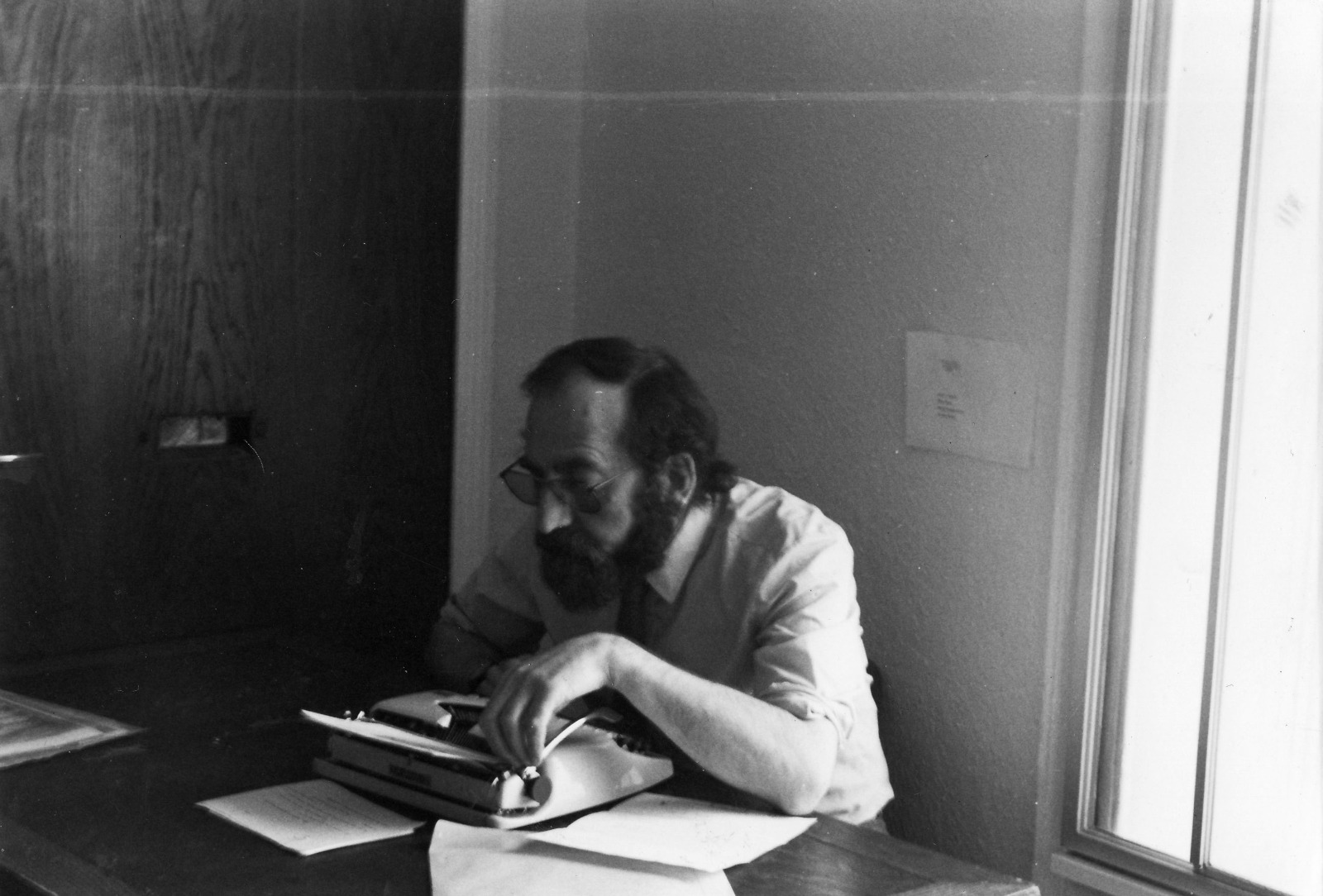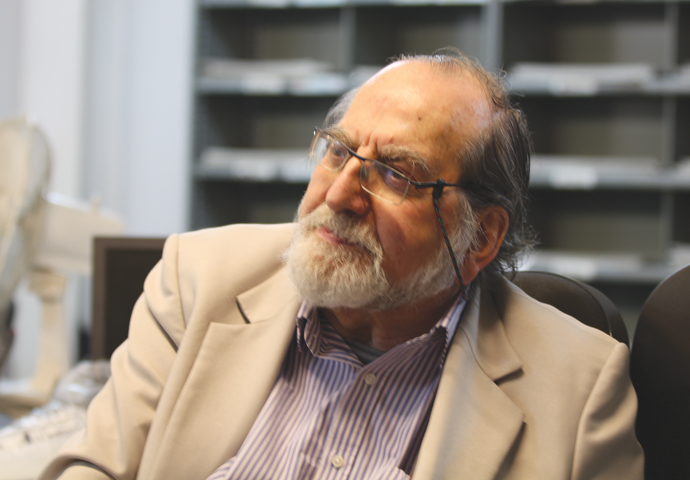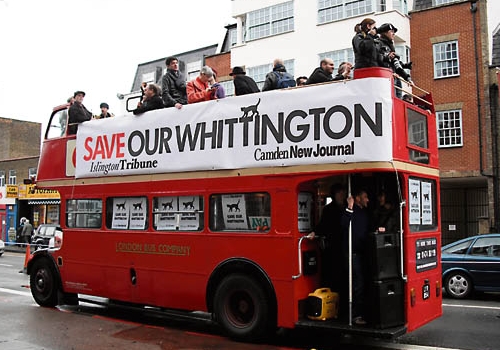How Eric made sure the ‘New’ in New Journal stood for something different: Independence!
Staff were reminded of the sacrifices that made their work possible
Thursday, 8th April 2021 — By Howard Hannah and Richard Osley

Eric Gordon at work at the old Camden Journal
ERIC Gordon wasn’t so hot on weekly newsroom meetings, the editor preferred colourful, mazy one-to-one briefings with his reporters.
But once a year, he would call everybody together and recite the history of the Camden New Journal. He was in his 80s, but he would stand for up to 45 minutes, maybe an hour, trying to express the sacrifices of the reporters who had gone before.
Never mind that your computer was slow or the emails had gone down, nearly 40 years ago there were journalists who went out on strike at the old Camden Journal and its stablemate titles in north London including the Islington Gazette.
There were others who joined the protest too from other papers, all risking their livelihoods.
The strikers had taken pay cuts and shared what they had to get through. It remains a stirring story of rebellion and defiance from a time in 1980 when a steady stream of newspaper closures had already begun.
Days before Christmas that year, nine journalists on the old Camden Journal were fired. It proved to be the starting gun on the dispute that led to the creation of the CNJ.
The strike lasted for around 16 months, the first half of which were incredibly busy for the strikers – bringing out the weekly Save the Journal strike paper and selling it to raise funds around the borough.
One of the favourite pitches for sales was the Mecca Bingo Hall in Arlington Road.
Our volunteer distributors included a wide range of supporters including tenants activists Terry Hargrave, John Mason and Alf Barrett as well as Camden Town luminaries such as the actor Denholm Elliot.
But at the same time staff were touring the country drumming up support. On these trips Eric gave the campaign an invaluable boost since, being older than the rest of most of the reporters, he packed more gravitas at meetings.
An additional attraction was his sometimes idiosyncratic delivery during his calls to action.
These would include a word which he would deliberately mispronounce. On one such occasion in Rugby, he made much use of the word “lunatic” which he pronounced “loon attic” to everybody’s bafflement.
His colleagues had never heard him pronounce the word thus before, nor in the 40 years since. When asked later “what was all that ‘loon attic’ about?” he just laughed, but he had kept people listening.
His age and his distinctive appearance complete with beard and glasses, also piqued the interest of the police at picket lines.
A trope of the time in many newspapers were photos of older men among young demonstrators with headlines: “Who is the mystery evil man behind these protests?”.
Eric fitted their sinister description and the police were always asking: “Who is that man?”.

One printer apprehensively surveying the picket line at Nuneaton, saw Eric and exclaimed: “They’ve got bloody Lenin here nah!” In truth, the strike and the support received from journalists all across London and beyond did not achieve all its aims.
The plan had been to stop the miserable trend of closing down newspapers not just here, but elsewhere too.
The final settlement, however, came with the historic agreement that Courier Newspapers must sell the Camden Journal title for a £1.
Maybe Eric had always favoured a breakaway title than going back to the same bosses, anyway.
He celebrated the importance of the newspaper’s independence ever after. It has meant, under Eric’s stewardship, the CNJ did not have to answer to people worried about how some stories might affect advertising.
The news agenda was not forced upon the journalists from some faraway head office.
And over the years, the newspaper grew: more pages, one or two more reporters to make sure the whole borough was covered, a lively sales team and wider distribution.
Written off at first, Eric saw the newspaper become indisputably Camden’s best-read news source. Impossible to ignore, campaigns were launched to save council homes, hospitals, the Prince of Wales Baths, and most recently the Kentish Town City Farm.
You could see a glimpse of pride when he was stood on top of the CNJ’s battle bus as it led the protest march against cuts at the Whittington Hospital; this was the kind of day that the newspaper had been created for.

The CNJ’s battlebus
The breadth of the operation meant the newspaper also played its part in the pandemic over this past year, coordinating food deliveries to those in need.
And as its reputation expanded, so did those wanting to write for it: some well known faces began to contribute. Even the long-serving editor of the Ham and High, Gerry Isaaman, signed up to write features for the Camden New Journal.
Each success, however, came with a reminder from Eric that it was the hungry strikers who had made it all possible.
Often he was asked what the future held for the CNJ and he talked of plans to make sure it can never be sold off to a large group.
The team currently on the staff would give whatever they had to have Eric back, standing at the front of the office, lecturing in full flow.
That can’t be, but his wishes and ideas remain imprinted on our minds as we commit to carrying on the paper in his unique spirit.